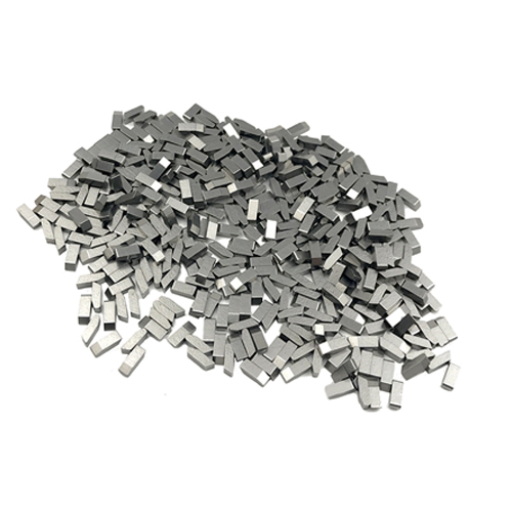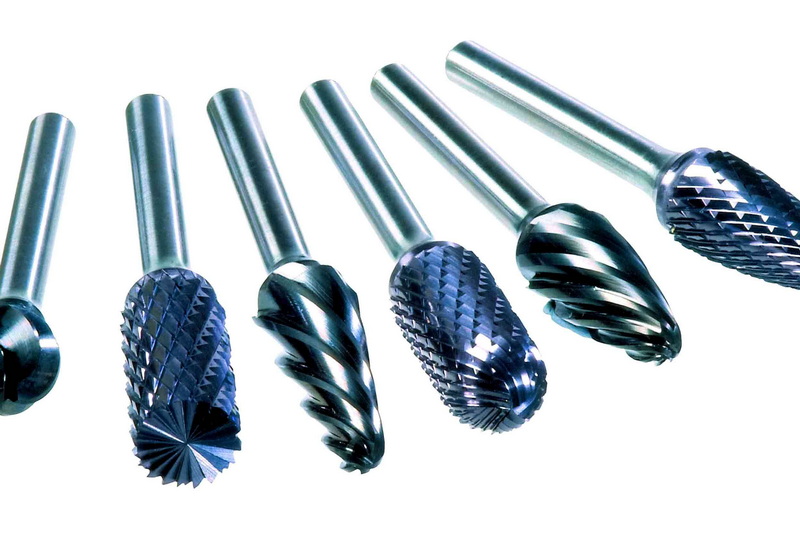Content Menu
● Diamond
● 2. Cubic Boron Nitride (c-BN)
● Wurtzite Boron Nitride (w-BN)
● Lonsdaleite (Hexagonal Diamond)
● Rhenium Diboride (ReB₂)
● Silicon Carbide (SiC)
● Graphene
● Comparative Analysis
● Advanced Applications and Future Trends
● Conclusion
● FAQs
>> 1. Why isn't tungsten carbide the hardest material?
>> 2. What is the hardest human-made material?
>> 3. Can lonsdaleite replace industrial diamonds?
>> 4. Which material performs best in high heat?
>> 5. Is graphene used in structural applications?
● Citations:
Tungsten carbide (WC) is widely recognized for its exceptional hardness, ranging from 8.5 to 9 on the Mohs scale, making it a staple in various industrial applications. From cutting tools to wear-resistant coatings, its durability is unmatched in many scenarios. However, the field of material science is ever-evolving, and in recent years, several materials have emerged that surpass tungsten carbide in hardness, offering enhanced performance in extreme and specialized conditions. This article delves into these materials, exploring their properties, applications, and the science behind their superior hardness, complete with visual aids and technical data for a comprehensive understanding.

Diamond
Hardness: 10 on Mohs scale | 70–150 GPa (Vickers)
- Diamond, the hardest naturally occurring material, is composed of carbon atoms arranged in a tetrahedral lattice structure. This unique arrangement provides exceptional strength and rigidity, making it virtually impervious to scratching and abrasion. Its unparalleled scratch resistance makes it an ideal choice for cutting, grinding, and drilling tools. Industries such as mining, construction, and manufacturing rely on diamond-tipped tools for their superior performance and longevity.
- However, diamonds are not without their limitations. They oxidize at temperatures above 800°C and can dissolve in iron, which restricts their use in machining ferrous metals. This is a significant consideration in applications where high temperatures and contact with iron-based materials are unavoidable. Despite these constraints, the hardness and abrasion resistance of diamond make it an indispensable material in numerous applications.
2. Cubic Boron Nitride (c-BN)
Hardness: ~50 GPa (Vickers)
- Cubic boron nitride (c-BN) is a synthetic material created under high-pressure and high-temperature conditions, resulting in a crystal structure that closely resembles that of diamond. It ranks second only to diamond in hardness. What sets c-BN apart is its remarkable thermal and chemical stability. Unlike diamond, c-BN remains stable at high temperatures, withstanding temperatures up to 1,400°C, and it exhibits a strong resistance to chemical reactions with iron. This makes it exceptionally well-suited for machining hardened steels, superalloys, and other ferrous materials.
- The industrial applications of c-BN are extensive. It is commonly used as a coating for cutting tools, providing enhanced durability and performance in machining operations. Its resistance to high temperatures and chemical inertness make it a reliable choice in demanding manufacturing environments.
Wurtzite Boron Nitride (w-BN)
Hardness: Theoretical 18% harder than diamond
- Wurtzite boron nitride (w-BN) is an extremely rare form of boron nitride formed during volcanic eruptions under intense pressure and temperature conditions. Its hexagonal crystal structure is similar to that of lonsdaleite, a hexagonal form of diamond. Theoretical calculations suggest that w-BN is approximately 18% harder than diamond, making it potentially the hardest known material.
- However, the extreme rarity of w-BN poses a significant challenge. The limited availability of natural samples prevents large-scale testing and characterization of its properties. Furthermore, commercial applications are currently unfeasible due to the lack of a practical method for synthesizing w-BN in sufficient quantities. Despite these limitations, w-BN remains an intriguing subject of research and a benchmark for material scientists seeking to create ultra-hard materials.
Lonsdaleite (Hexagonal Diamond)
Hardness: 58% harder than diamond (theoretical)
- Lonsdaleite, also known as hexagonal diamond, is a carbon allotrope formed in meteorites upon impact with the Earth. The immense pressure and heat generated during these impacts create a unique hexagonal crystal structure. Theoretical calculations indicate that lonsdaleite may be up to 58% harder than diamond, making it an extremely promising material for super-hard applications.
- However, natural lonsdaleite samples often contain numerous impurities and structural defects, which can compromise their mechanical properties. Synthesizing pure lonsdaleite in the lab has proven to be challenging, and synthetic production remains largely experimental. Despite these challenges, research into lonsdaleite continues, driven by the potential for creating materials with exceptional hardness and strength.
Rhenium Diboride (ReB₂)
Hardness: 48 GPa (Vickers)
- Rhenium diboride (ReB₂) is a superhard material that combines the high electron density of rhenium with the strong covalent bonds of boron. This unique combination results in exceptional hardness at ambient pressure, setting it apart from other superhard materials that require extreme pressure for synthesis. ReB₂ has a high Vickers hardness of approximately 48 GPa, making it significantly harder than tungsten carbide.
- One of the unique advantages of ReB₂ is its metallic nature, which allows it to be shaped using electric discharge machining (EDM). This is a significant advantage for creating complex tool geometries and precision components. ReB₂ has potential applications in aerospace components, cutting tools, and wear-resistant coatings.
Silicon Carbide (SiC)
Hardness: 9.5 on Mohs scale
- Silicon carbide (SiC) is a compound of silicon and carbon with exceptional hardness, high thermal conductivity, and resistance to high temperatures and chemical attack. With a hardness of 9.5 on the Mohs scale, SiC outperforms tungsten carbide in abrasive and high-temperature environments. Its applications range from pump seals to grinding wheels, where its wear resistance and durability are critical.
- SiC also boasts a low density of 3.21 g/cm³, which reduces wear in high-speed applications. This makes it an ideal material for use in aerospace and automotive industries, where weight reduction and high-performance materials are essential. Silicon carbide's combination of hardness, thermal properties, and chemical resistance make it a versatile material for numerous demanding applications.
Graphene
Hardness: 130 GPa (tensile strength)
- Graphene is a two-dimensional (2D) material consisting of a single layer of carbon atoms arranged in a hexagonal lattice. While traditional hardness testing is difficult to apply to a 2D material, graphene exhibits exceptional mechanical strength. It is estimated to have a tensile strength of 130 GPa, making it approximately 200 times stronger than steel. This extraordinary strength, combined with its lightweight and flexibility, makes graphene a revolutionary material for composites and nanotechnology.
- The unique properties of graphene have led to its exploration in a wide range of applications, including advanced composites, flexible electronics, and high-strength coatings. While its 2D structure presents challenges for some traditional applications, graphene's mechanical strength and other properties continue to drive innovation in various fields.
Comparative Analysis
To provide a clear comparison, the following table summarizes the key properties and applications of the materials discussed:
| Material | Hardness (Mohs) | Vickers Hardness (GPa) | Key Applications |
| Tungsten Carbide | 8.5–9 | 18–22 | Cutting tools, mining, wear-resistant parts |
| Diamond | 10 | 70–150 | Drilling, cutting, abrasives, jewelry |
| c-BN | - | ~50 | High-temperature machining, cutting tools |
| Silicon Carbide | 9.5 | 20–30 | Abrasives, ceramics, semiconductors |
| ReB₂ | - | 48 | Wear-resistant coatings, cutting tools |
| Graphene | - | - | Composites, electronics, coatings |
Advanced Applications and Future Trends
- The quest for materials harder than tungsten carbide is driven by the increasing demands of modern technology. Industries such as aerospace, automotive, and electronics require materials that can withstand extreme conditions, including high temperatures, pressures, and corrosive environments. The development of superhard materials is crucial for advancing these industries and enabling new technological innovations.
- In the future, we can expect to see increased research into the synthesis and characterization of novel superhard materials. This will likely involve advanced computational modeling and experimental techniques to design and create materials with tailored properties. Additionally, the development of cost-effective manufacturing methods will be essential for the widespread adoption of these materials in industrial applications.
Conclusion
While tungsten carbide remains a vital material in many industrial applications due to its balance of hardness, toughness, and cost, materials such as diamond, cubic boron nitride (c-BN), and silicon carbide offer superior hardness and performance in specialized applications. Emerging materials like graphene and lonsdaleite hold great promise for future breakthroughs in nanotechnology and extreme-condition engineering. Selecting the most suitable material depends on a careful consideration of factors such as hardness, thermal stability, chemical resistance, and cost. As technology advances, the demand for superhard materials will continue to drive innovation and discovery in the field of material science.

FAQs
1. Why isn't tungsten carbide the hardest material?
Tungsten carbide is a composite material consisting of tungsten carbide grains embedded in a metal matrix, typically cobalt. This structure limits its maximum hardness. Monolithic ceramics and covalently bonded materials like diamond, which have a more uniform and stronger bonding structure, can achieve higher hardness values.
2. What is the hardest human-made material?
Lab-grown diamond is currently the hardest human-made material. It is synthesized under controlled conditions to produce single-crystal diamonds with minimal defects, resulting in exceptional hardness. However, theoretical materials like lonsdaleite could surpass it if synthesized purely.
3. Can lonsdaleite replace industrial diamonds?
Not yet. Natural lonsdaleite contains defects and impurities, while synthetic production is challenging and costly. Overcoming these hurdles is essential before lonsdaleite can be considered a viable replacement for industrial diamonds.
4. Which material performs best in high heat?
Cubic boron nitride (c-BN) exhibits excellent thermal stability and can operate effectively up to 1,400°C. This makes it ideal for high-temperature machining applications, outperforming diamond and tungsten carbide in the machining of steel and other ferrous materials.
5. Is graphene used in structural applications?
Graphene's primary applications are currently in composites, electronics, and coatings. The challenges associated with its two-dimensional structure limit its use in standalone structural components.
Citations:
[1] https://konecarbide.com/tungsten-vs-tungsten-carbide-differences-explained/
[2] https://www.justmensrings.com/blogs/justmensrings/what-are-the-differences-between-titanium-and-tungsten
[3] https://transmet.com/the-10-strongest-materials-known-to-man/
[4] https://www.forbes.com/sites/startswithabang/2019/06/18/there-are-6-strongest-materials-on-earth-that-are-harder-than-diamonds/
[5] https://www.technology.org/how-and-why/9-hardest-materials-in-the-world/
[6] https://kaner.chem.ucla.edu/superhard-materials-2/
[7] https://www.syalons.com/2024/07/08/silicon-carbide-vs-tungsten-carbide-wear-applications/
[8] https://en.wikipedia.org/wiki/Superhard_material
[9] https://craftstech.net/2019/07/31/superhard-materials-harnessing-the-hardest-materials-on-earth-to-advance-your-industrial-equipment/
[10] https://heegermaterials.com/blog/79_tungsten-carbide-vs-titanium-carbide.html
[11] https://phys.org/news/2020-12-machine-boosts-superhard-materials.html
[12] https://va-tungsten.co.za/pure-tungsten-vs-tungsten-carbide-whats-the-difference/
[13] https://wisconsinmetaltech.com/10-strongest-metals-in-the-world/
[14] https://www.samaterials.com/content/the-10-strongest-materials-known-to-man.html
[15] https://industrialmetalservice.com/metal-university/differentiating-tungsten-carbide-vs-steel-and-other-tooling/
[16] https://www.technology.org/how-and-why/9-hardest-materials-in-the-world/
[17] https://www.bladeforums.com/threads/carbide-hardness-chart.1705186/
[18] https://physics.stackexchange.com/questions/247858/what-would-be-the-hardest-material-in-the-universe
[19] https://www.reddit.com/r/Machinists/comments/wxgtji/what_is_the_most_challenging_material_you_machine/
[20] https://chemistry.science.narkive.com/HpCYYG5k/what-is-the-hardest-material-in-the-world
[21] https://www.bladeforums.com/threads/ceramic-harder-than-carbide.1396535/
[22] https://www.istockphoto.com/photos/hard-material
[23] https://tampasteel.com/what-are-the-strongest-metals/
[24] https://community.glowforge.com/t/research-stiffest-and-hardest-materials/17713
[25] https://lightsources.org/2024/06/18/superhard-materials-at-the-nanoscale-smaller-is-better/
[26] https://www.shutterstock.com/search/hard-material
[27] https://elements.lbl.gov/news/superhard-materials-at-the-nanoscale-smaller-is-better/
[28] https://ambipar.com/en/noticias/the-six-lightest-and-toughest-materials-in-the-world/
[29] https://acs.digitellinc.com/p/s/superhard-metals-583827
[30] https://forums.tripwireinteractive.com/index.php
[31] https://www.worldatlas.com/articles/top-hardest-materials-on-the-planet.html
[32] https://www.hyperionmt.com/en/Resources/materials/
[33] https://www.eng-tips.com/threads/tungsten-amp-tungsten-carbide-alternatives.234870/
[34] https://grish.com/characteristics-and-applications-of-superhard-material-coated-abrasive-tools/
[35] https://www.reddit.com/r/metallurgy/comments/55zffp/looking_for_a_strong_metal_stronger_than_tungsten/
[36] https://www.aemmetal.com/news/tungsten-vs-tungsten-carbide-guide.html
[37] https://craftstech.net/solutions/materials-science/
[38] https://www.eng-tips.com/threads/tungsten-carbide-or-silicon-carbide-which-is-the-better-option.387/
[39] https://www.reddit.com/r/askscience/comments/f02z1/materials_science_question_why_does_an_extremely/
[40] https://www.morecuttingtools.com/news/Types_and_applications_of_superhard_material_tools.html
[41] https://als.lbl.gov/superhard-materials-at-the-nanoscale-smaller-is-better/
[42] https://www.reddit.com/r/worldbuilding/comments/18bknb9/what_is_the_hardest_workable_material_in_your/
[43] https://www.meadmetals.com/blog/what-are-the-strongest-metals
[44] https://phys.org/news/2022-12-toughest-material-earth.html
[45] https://www.popularmechanics.com/science/environment/a28970718/superhard-materials/
[46] https://jacobsschool.ucsd.edu/news/release/2672?id=2672
[47] https://ceramics.org/ceramic-tech-today/machine-learning-model-predicts-superhard-materials-from-crystal-structure/
[48] https://craftstech.net/2019/07/31/superhard-materials-harnessing-the-hardest-materials-on-earth-to-advance-your-industrial-equipment/
[49] https://www.nature.com/articles/s41524-019-0226-8















